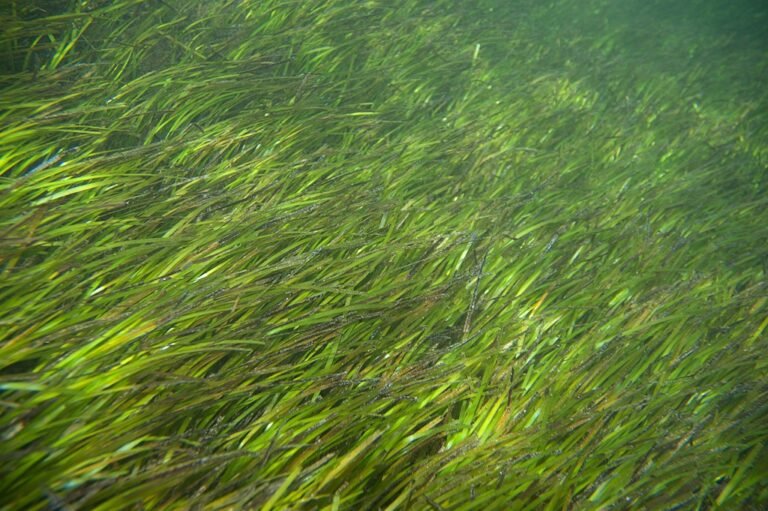Top 5 Sustainable Ranching Practices to Reduce Environmental Impact and Boost Profitability
Why is it environmentally important to adopt sustainable ranching practices? How does ranching affect the environment, and what are the best practices to minimise the impact of raising livestock?
Humans have been raising large herds of livestock for centuries. According to National Geographic, the earliest practice of raising livestock on extensive grazing land began in Portugal and Spain around 100 CE. People have relied on ranching for meat, fibre, raw materials, and dairy products. Today, the dairy industry thrives, providing products to millions of consumers.
While ranching provides these essential resources, raising livestock has a significant environmental impact. It can lead to deforestation, water pollution, carbon emissions, and soil degradation. According to the United Nations Food and Agriculture Organisation (FAO), livestock production accounts for 14.5% of all human-induced greenhouse gas emissions globally.

In This Article
- What Is Ranching?
- Environmental Impact of Ranching
- The Urgent Need for Sustainable Ranching Practices
- Challenges and Solutions for Sustainable Ranching
- Future Outlook for Sustainable Ranching
- Conclusion: A Sustainable Path Forward
What Is Ranching?
According to National Geographic, ranching is “the practice of raising herds of animals on large tracts of land.” It involves raising livestock such as bison, alpacas, cattle, sheep, and even ostriches for food and raw materials.
Ranching is most common in temperate and dry regions, with areas like the Western United States, Canada’s Prairie Provinces, and the South American Pampas being suitable for livestock raising. The ranching industry is growing rapidly due to the high demand for meat and dairy products. It accounts for a significant portion of the national economies in these regions. According to a study, the global livestock sector employs over 1.3 billion people annually.
Environmental Impact of Ranching
The environmental impact of raising livestock has become a global concern. According to a 2022 study agriculture, specifically ranching and livestock production, occupies an estimated 38% of the earth’s land surface—an expansion that has led to deforestation and a loss of biodiversity.
In the Amazon rainforest, for example, the Brazilian government reported that about 19% of the rainforest has been destroyed for cattle ranching over the past four decades. This level of forest destruction in the Amazon poses a serious threat to the region’s unique biodiversity. If sustainable practices are not prioritized, ranching can accelerate environmental degradation, from greenhouse gas emissions to water pollution.
The Urgent Need for Sustainable Ranching Practices
Sustainable ranching practices focus on preventing soil degradation, reducing carbon emissions, conserving water, and protecting biodiversity, all while maintaining profitable ranching operations. Here, we will look at five key practices that ranchers can implement to create eco-friendly ranching systems
#1. Conservation of Natural Resources
Ranching can be resource-intensive but the best practices prioritize conserving resources. Sustainable ranching involves efficient use of water, soil, and other environmental resources to minimize negative impacts and ensure long-term productivity.
Water Conservation
According to the Water Footprint Network, it takes about 2,000 gallons (7571 litres) of water to produce one pound of beef. This significant water consumption can deplete freshwater sources, especially in regions prone to long-lasting droughts.
To address these environmental issues, ranchers are switching to advanced water management systems. For instance, rotational grazing reduces water consumption and grass wastage by allowing plants and pasture to recover. Studies conducted by the University of California found that rotational grazing lowered water usage by almost 30% in test cases.
Another important technique is the implementation of efficient irrigation systems, such as drip irrigation, which can save thousands of gallons of water annually.
| Water Conservation Techniques | Benefits |
| Rotational Grazing | Reduces water consumption and improves pasture health |
| Efficient Irrigation (e.g., drip systems) | Minimizes water waste and provides targeted hydration to crops and livestock |
| Rainwater Harvesting | Captures and stores rainwater for future use, reducing the need for groundwater resources |
| Wetland Restoration | Helps retain water naturally within landscapes, benefiting both wildlife and livestock |
Soil and Biodiversity Conservation
Sustainable ranching practices also involve protecting soil quality and promoting biodiversity. Techniques such as cover cropping can increase microbial activity in the soil, prevent soil erosion, and improve fertility. Cover crops naturally help retain moisture and prevent runoff, which could contaminate water supplies.
Additionally, preserving native vegetation ensures that wildlife habitats remain intact and unique ecosystems are stabilized. According to the World Wildlife Fund (WWF), ranches that incorporate native plants and rotational grazing report a 20 to 30% increase in local biodiversity.
According to Dr. Sandra Postel, an expert in freshwater sustainability and author of Replenish, “Healthy ecosystems and sustainable practices are mutually beneficial. When we manage ranching with an eye toward conservation, the economic and environmental rewards can be substantial.”
Learn More: Sustainable Water Management Practices
#2. Waste Management and Recycling
Raising a large herd of livestock produces substantial amounts of animal waste. According to the U.S. Environmental Protection Agency (EPA), a cow produces about 120 pounds of manure per day. If this waste is not properly managed, it can cause air and water pollution.
Composting and Manure Recycling
Composting animal waste into nutrient-rich soil is a simple solution to improving soil health while reducing methane emissions. A report from the Rodale Institute shows that composting can reduce methane emissions by up to 50% when applied on large ranches.
Animal waste can also be used to produce biogas through anaerobic digestion. Biogas digesters convert manure into methane, which can then be used as an energy source.
Case Study: California Dairy Farms
Biogas digesters are widely used on many dairy farms in California’s Central Valley. A report by the California Department of Food and Agriculture suggests that biogas systems generate enough power to meet the energy needs of entire ranch operations. The reliance on biogas digesters has significantly reduced methane emissions.
| Waste Management Strategies | Benefits |
| Composting | Reduces methane emissions, improves soil fertility, and eliminates the need for chemical fertilizers |
| Biogas Digesters | Converts animal waste into renewable energy, reducing reliance on fossil fuels |
| Nutrient Recycling | Manure nutrients can be recycled into crops, reducing the need for synthetic fertilizers |
| Wastewater Treatment Systems | Prevents contamination of local water sources by treating wastewater from ranching operations |
#3. Renewable Energy Adoption
Operating your farm off the grid with renewable energy sources is sustainable. Ranchers around the world are investing in renewable energy sources such as solar power, wind, and bioenergy systems.
Solar and Wind Power
Modern ranches in the United States, particularly in Texas and Wyoming, are increasingly relying on renewable energy sources to generate power. Ranchers in these states are investing in solar panels and wind turbines to keep their operations running smoothly.
In Australia, Solaris Ranch has integrated a 1.5-megawatt solar farm that powers the entire ranch, significantly reducing energy costs and carbon emissions. According to the Commonwealth Scientific and Industrial Research Organization (CSIRO), this solar farm has reduced the ranch’s carbon footprint by 60%.
Bioenergy Systems
Ranchers are also adopting bioenergy systems to convert waste from organic materials, including animal waste and crop residue, into fuel. The National Renewable Energy Laboratory estimates that bioenergy could supply 15% to 20% of the energy needed for ranching operations in the United States by 2030.
| Renewable Energy Source | Benefits |
| Solar Power | Provides a sustainable energy source with low operational costs |
| Wind Power | Reduces greenhouse gas emissions and provides energy for large ranching operations |
| Biogas Digesters | Converts waste into renewable energy, cutting down on carbon emissions and operational costs |
| Hybrid Systems (solar + wind) | Maximizes energy production by combining solar and wind, ensuring a stable energy supply year-round |
According to environmental scientist and climate change expert Dr Jonathan Foley “Renewable energy adoption is not only about reducing carbon emissions but also about improving the resilience and sustainability of ranching operations. With renewable energy, ranchers can reduce operational costs and gain energy independence.”
Learn More: What Is the Goal of Wildlife Conservation?
#4. Regenerative Grazing
Regenerative grazing is a nature-based approach that emphasizes the health of pasturelands while reducing environmental damage. By mimicking natural grazing patterns, regenerative grazing allows grasses to regrow and soil to recover, increasing the overall productivity of the land.
Holistic Management Techniques
Allan Savory, an advocate of regenerative grazing and the founder of the Savory Institute promotes an approach known as Holistic Management. This method involves dividing ranch lands into smaller paddocks, where livestock is rotated systematically. This process encourages plant regeneration and restores soil carbon levels.
According to research published in the Journal of Soil and Water Conservation, ranches that practice regenerative grazing report up to a 30% increase in soil organic matter and a 50% reduction in soil erosion. Regenerative grazing supports deeper root systems and plant growth, which helps sequester carbon in the soil.
Increased Biodiversity and Soil Health
Regenerative grazing naturally boosts biodiversity. A study by the University of California, Davis, found that ranches implementing regenerative grazing experienced a 15% increase in the number of plant species and a 20% improvement in water retention capacity compared to conventional ranches. This biodiversity supports healthier ecosystems and reduces the need for synthetic inputs like fertilizers.
Case Study: Australia’s Mulloon Institute
The Mulloon Institute in Australia has been a pioneer in regenerative farming. They have demonstrated that regenerative grazing improves water infiltration, enhances biodiversity, and sequesters carbon.
Learn more: Why Is Recycling Glass Important to the Environment?
#5. Diversification and Agroforestry
Diversification in ranching operations is important for sustainability. This involves integrating different agricultural activities, such as combining livestock farming with agroforestry (the practice of planting trees alongside pastures).
Agroforestry Benefits
Agroforestry is the integration of trees and shrubs into crop and animal farming—a combined farming system that not only provides shelter for livestock but also prevents soil erosion and boosts soil health. Trees serve as natural windbreakers, creating microclimates that improve pasture growth. They sequester carbon and reduce the overall carbon footprint of ranching operations.
A study by the University of Missouri found that ranches practising agroforestry sequester 2 to 4 tons of carbon per hectare annually.
Silvopasture
Silvopasture is a type of agroforestry where livestock graze under tree canopies. This method improves soil fertility and reduces the need for chemical fertilizers. According to a study from the Silvopasture Research Centre, combining livestock with trees can increase land productivity by 25 to 35% and reduce water consumption by 15%.
| Agroforestry Technique | Benefits |
| Silvopasture | Increases land productivity, improves soil fertility, and provides additional revenue from tree crops |
| Windbreaks | Protects livestock from harsh weather and prevents soil erosion |
| Riparian Buffers | Improves water quality by filtering runoff and providing habitat for wildlife |
| Carbon Sequestration | Reduces carbon emissions by trapping atmospheric carbon in trees and soil |
“Agroforestry is one of the most powerful tools we have for sustainable ranching. By integrating trees into grazing systems, ranchers can improve ecosystem services, enhance biodiversity, and increase farm profitability,” says Dr. James Garrett, a researcher in agroforestry and sustainable agriculture.
Challenges and Solutions for Sustainable Ranching
While we highlight the benefits of sustainable ranching practices, there are a few challenges, particularly in terms of initial costs and knowledge transfer. Renewable energy systems, regenerative grazing infrastructure, and efficient irrigation technologies require significant upfront investment. This remains a challenge for many ranchers, especially small-scale operators without financial backing.
Government Support and Financial Incentives
Governments worldwide are making efforts to support sustainable ranching. In the United States, for example, the Environmental Quality Incentives Program (EQIP) offers financial assistance to ranchers who prioritize eco-friendly practices. The European Union (EU) also provides grants and subsidies for sustainable agriculture through its Common Agricultural Policy (CAP).
Carbon Offset Markets
Carbon offset markets allow ranchers to sell carbon credits based on their ability to sequester carbon through regenerative practices. According to Business Green, the global carbon market could be worth $100 billion by 2030, providing ranchers with a new source of revenue for sustainable practices.
Future Outlook for Sustainable Ranching
The future of sustainable ranching will only get better with technological advancements. Precision agriculture, AI-driven grazing systems, and drone monitoring are innovations revolutionizing ranch management.
Precision Agriculture and AI
Precision agriculture utilizes satellite imagery, drones, and sensors to monitor soil health, track livestock, and optimize grazing patterns closely. The major benefits of these technologies include waste reduction and enhanced sustainability in ranch operations. According to a study by Smart Agricultural Technology, precision agriculture techniques reduce input costs by 20% and improve yields by 15%.
Alternative Protein Sources
The rise of lab-grown meat and plant-based alternatives could reshape the livestock industry. According to the Good Food Institute, plant-based meat sales in the United States increased by 45% in 2020. As demand for alternative proteins grows, ranchers may need to diversify their operations further to remain competitive.
Conclusion: A Sustainable Path Forward
Sustainable ranching is ideal for the environment as it offers a critical path toward balancing environmental conservation with economic growth. By conserving natural resources, adopting renewable energy, implementing waste management systems, and embracing regenerative grazing and agroforestry, ranchers can reduce their environmental footprint.
As global demand for meat and dairy continues to rise, the ranching industry must evolve. Through innovation, education, and government support, ranchers can contribute to a more sustainable and resilient agricultural future. Sustainable ranching is not just a trend; it’s a necessity for a healthier planet and a more secure food system for future generations.







